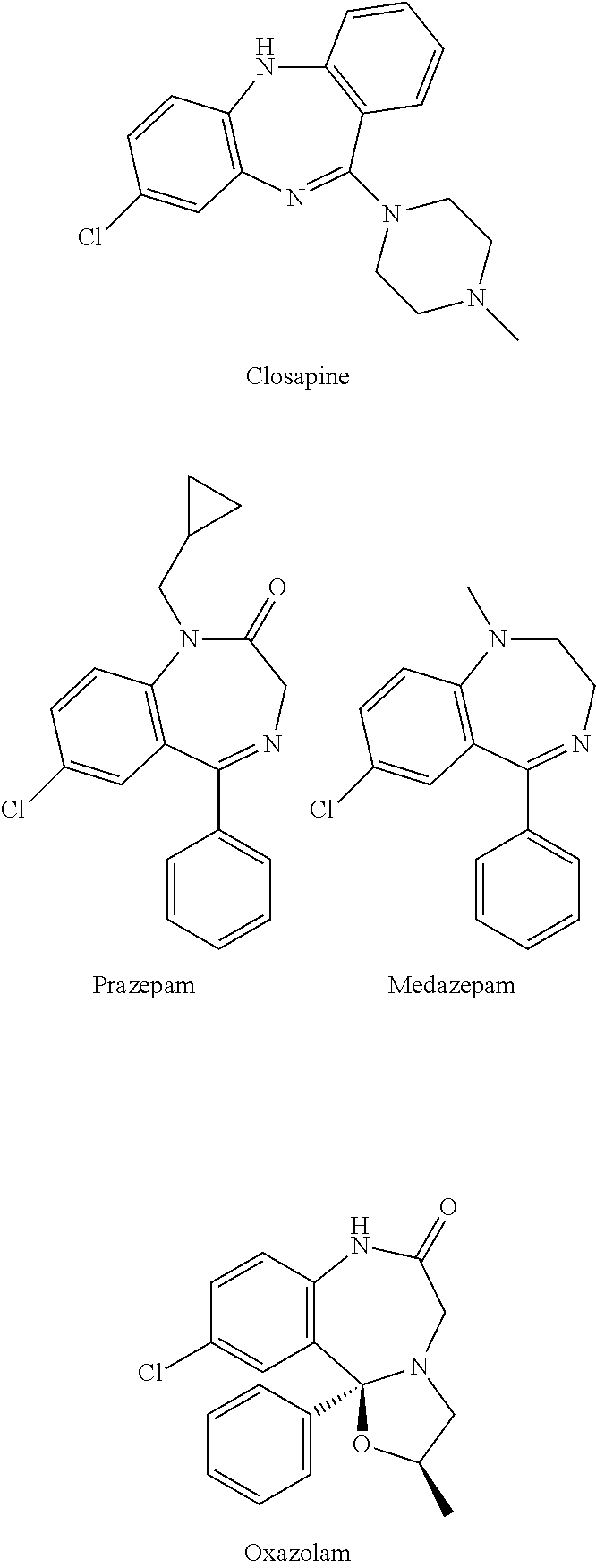Test kit for the quantitative determination of narcotic drugs
a test kit and drug technology, applied in the field of test kits for the quantitative determination of narcotic drugs, can solve the problems of no such sup>13/sup>, risk of exchange, and danger of overlap, so as to improve the safety of handling and transportation, avoid or at least significantly minimize the source of errors, and improve the effect of stock control
- Summary
- Abstract
- Description
- Claims
- Application Information
AI Technical Summary
Benefits of technology
Problems solved by technology
Method used
Image
Examples
example 1
Synthesis of [13C4]-diacetyl morphine ([13C4]-heroine)
[0238]
[0239]Morphine hydrochloride (0.5 g, 1.56 mmol) was dissolved in a mixture of pyridine (15 mL) and 1,1′,2,2′-[13C4]-acetic anhydride (20 mL). The solution was stirred at room temperature for 24 hours, then poured on ice, washed with 10% sodium bicarbonate (50 mL) and extracted with chloroform (3×50 mL). The organic layers were combined, washed with water and dried over MgSO4. The solvent was partially evaporated and diethyl ether was added. After cooling, the white solid was filtered, washed and dried, yielding 431 mg [13C4]-morphine diacetate (97% yield).
example 2
Synthesis of [13C5]-diacetylmorphine ([13C5]-heroine)
[0240]
2.1 Synthesis of [13C1]-codeine
[0241]Norcodeine (0.76 g, 2.67 mmol), potassium carbonate (1.55 g, 10.6 mmol) and tetra-n-butylammonium bromide (0.86 g, 2.67 mmol) were mixed in dry toluene (50 ml), and the mixture was warmed to 110° C. A solution of iodomethane-13C1 (0.4 g, 2.81 mmol) in 10 ml of toluene was dropped in. The reaction mixture was stirred at 110° C. overnight, and was then cooled to room temperature. The two layers were separated, the water phase was extracted with toluene, and the combined organic phases were washed with water and dried over sodium sulfate. After sodium sulfate and the solvent were removed, the crude [13C1]-codeine was purified by preparative HPLC to give 450.5 mg (55.9% yield) pure product.
2.2 Synthesis of [13C1]-morphine
[0242][13C1]-Codeine (N-methyl 13C, 400 mg, 1.32 mmol) was heated with pyridine hydrochloride for 5 hours. The reaction mixture was diluted with water. 4N NaOH solution was a...
example 3
Synthesis of [13C3]-3-acetylmorphine ([13C3]-3-MAM)
[0244]
[0245][13C1]-Morphine (0.5 g, 1.75 mmol) was suspended in dry dichloromethane (30 mL). Triethylamine (0.44 g, 4.38 mmol) was added in one portion whereupon the morphine base dissolved. 1,2-[13C2]-acetyl chloride (1.42 mg, 1.77 mmol) in dry dichloromethane (10 mL) was added slowly to the reaction mixture. The reaction was kept at ambient temperature for 30 minutes and the refluxed for another 30 minutes before cooling in an icebath and quenching with a saturated solution of NaHCO3 (50 mL). The organic phase was separated and the water phase extracted with two portions of dichloromethane (2×25 mL). The combined organic phases were washed with water (50 mL) and dried over MgSO4. Evaporation of the solvent yielded the product as a clear oil. Diethyl ether was added and the compound crystallized upon cooling. The product was separated from impurities of diacetylmorphine by filtration; yield 522.9 mg (89%) [13C3]-3-acetylmorphine (3...
PUM
| Property | Measurement | Unit |
|---|---|---|
| temperature | aaaaa | aaaaa |
| temperature | aaaaa | aaaaa |
| pressure | aaaaa | aaaaa |
Abstract
Description
Claims
Application Information
 Login to View More
Login to View More - R&D
- Intellectual Property
- Life Sciences
- Materials
- Tech Scout
- Unparalleled Data Quality
- Higher Quality Content
- 60% Fewer Hallucinations
Browse by: Latest US Patents, China's latest patents, Technical Efficacy Thesaurus, Application Domain, Technology Topic, Popular Technical Reports.
© 2025 PatSnap. All rights reserved.Legal|Privacy policy|Modern Slavery Act Transparency Statement|Sitemap|About US| Contact US: help@patsnap.com



